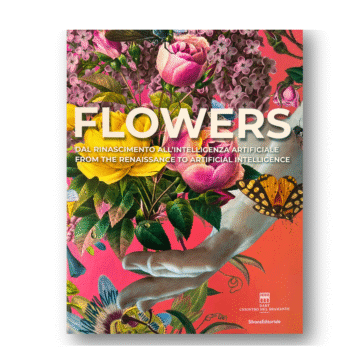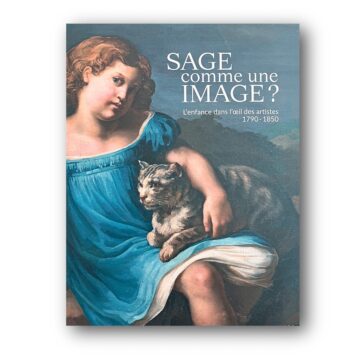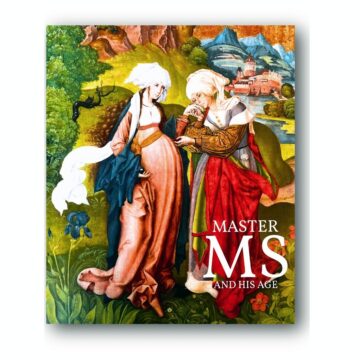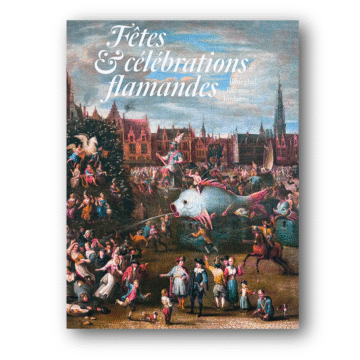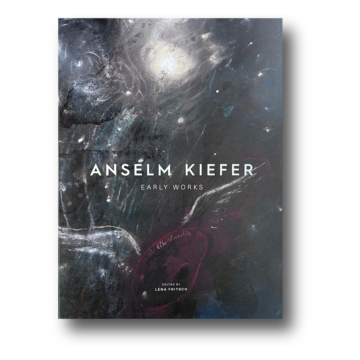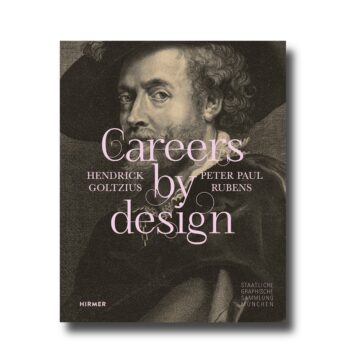Men in Windows, Women in History: The Art Exhibitions of July 2025
Windows are open this month, both literally and metaphorically. Men peer out of them, as in Caillebotte’s famous canvas. Women step through them, out of the shadows of history. Children peer in, unsure whether to play, work, or pose. And somewhere on the gallery wall, Napoleon stares at you like a demigod in velvet boots.
This July, the world’s museums are offering exhibitions that look inward and outward at once — on identity, ambition, memory, celebration, and pain. From the subtle chiaroscuro of Renaissance drawings in Tokyo to the pastel fever dreams of Nicolas Party in Bath, from Flemish drunken carnivals to feminist rediscoveries in Prague — this summer’s shows are bursting with color, courage, and curiosity.
Let’s walk through the windows together.
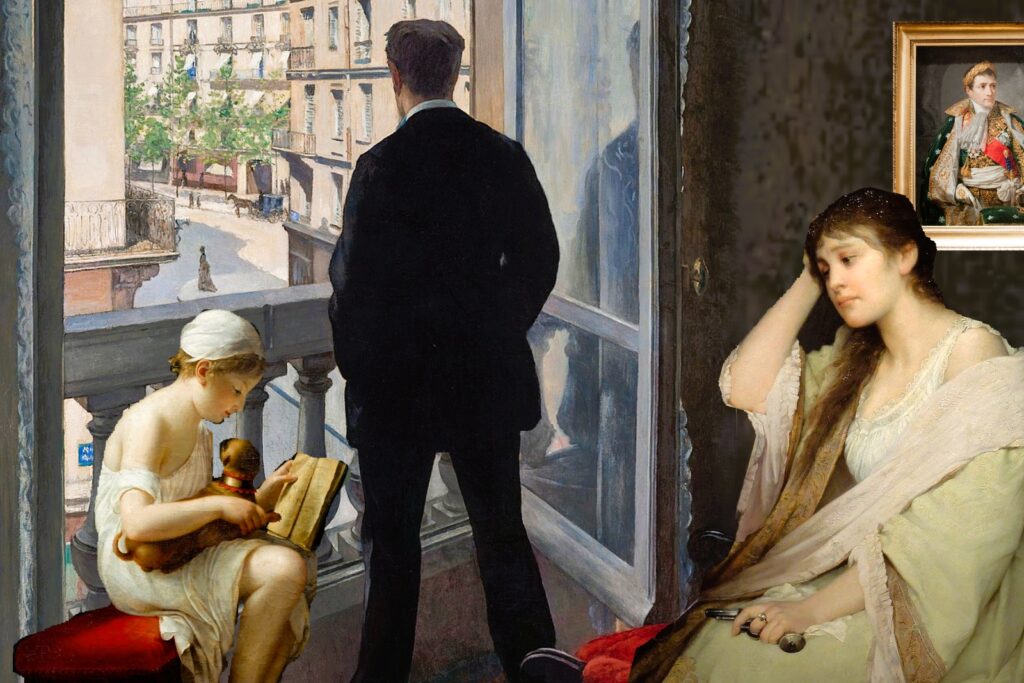
EUROPEAN EXHIBITIONS
Italy
Polish Queen on the Capitoline Hill: Maria Casimira and the Sobieski Royal Family in Rome
Capitoline Museums, Rome — June 11 to September 21, 2025
Before she was a Roman matriarch, Maria Casimira was Queen of Poland, and wife to King Jan III Sobieski, the military commander celebrated for halting the Ottoman advance at the Battle of Vienna in 1683. His victory reshaped Europe’s political balance.
But in 1699, Maria Casimira arrived in Rome as a royal widow with a mission. Her presence was not just symbolic. It was strategic. She built alliances, hosted salons, and inserted herself into the complex web of Vatican diplomacy. When Pope Innocent XII’s death in 1700 set off a fiercely contested papal election, Maria Casimira had already laid the groundwork.
One of the remarkable items in the exhibition, a newly displayed drawing from the State Library of the Grottaferrata National Monument, shows a grand banquet given in her honor shortly after her arrival in Rome. The feast became a political event, attended by cardinals aligned with rival factions vying for influence in the upcoming conclave.
The exhibition also features portraits of the royal couple and other members of the Sobieski family, many of which are being shown to the public for the first time.
This exhibition reveals how one queen wielded charm, wealth, and cultural capital at the heart of Baroque Rome. Intrigue, exile, and legacy served with silver and silk.
Flowers: From the Renaissance to Artificial Intelligence
Chiostro del Bramante, Rome — Until September 14, 2025
If floral imagery makes you swoon, and we suspect it might, then this exhibition in the heart of Rome offers a multisensory journey through the cultural codes, aesthetics, and symbolism of flowers in art. Five centuries, ten countries, and one blooming spectacle.
From Renaissance herbals to 21st-century digital blooms, the show explores how flowers have embodied science, seduction, seasons, and spirituality in art.
Among the treasures is a rare tapestry, The Pilgrim in the Garden, designed by Pre-Raphaelite master Edward Burne-Jones. Romantic, allegorical, and rich with mystical flora, it anchors the show’s exploration of how gardens are spaces of the soul as well as of nature.
But the true revelation of the exhibition is the rediscovery of Girolamo Pini — a Florentine artist at the Medici court whose hyper-detailed botanical panels, painted around 1615, capture tulips, fritillaries, and insects with scientific precision and Renaissance elegance. Part painting, part herbarium, his works are astonishing in both beauty and insight.
Sadly, only three panels by Pini were known to exist, and all three are now on display at the Museum of Decorative Arts in Paris as part of this show. Our curiosity led us into a research rabbit hole, and we were thrilled to discover that just last month, another botanical panel attributed to Pini surfaced and was sold at auction. We can only hope it found a home in a museum.
And yes, in the tradition of still life and its subtle games: find the fly on Pini’s panel.
Explore the exhibition catalog
FRANCE
Appiani. Napoleon’s Painter in Italy
Musée national des châteaux de Malmaison et de Bois-Préau— Until July 28, 2025
Only Appiani could make Napoleon look like a god.
Andrea Appiani was a genius of Neoclassicism, a member of a Masonic lodge, and an artist whose career soared during the Napoleonic era in Italy. For his achievements, Napoleon himself named Appiani the “first painter of the King of Italy.”
This exhibition marks the first retrospective of Appiani in France and brings together nearly one hundred works from museums and private collections. Expect a wealth of imperial portraits, allegorical paintings, and rare glimpses into the visual propaganda of an empire.
Appiani painted no fewer than sixteen portraits of Napoleon and members of the Bonaparte and Beauharnais families. His mythologizing brush helped shape how Europe saw its most controversial ruler.
A celebration of Neoclassical grace and imperial ambition.
Explore the exhibition catalog
Flemish Festivals & Celebrations
Palais des Beaux-Arts de Lille — Until September 1, 2025
Let’s start with a word that sounds like a party trick from the 16th century: ommegang. It was exactly that — a parading, costumed, often chaotic procession marking religious and civic holidays across the towns of Flanders. Imagine giant puppets, beer-fueled dances, and nobles side-by-side with beggars, the sick, the jubilant, and the slightly possessed.
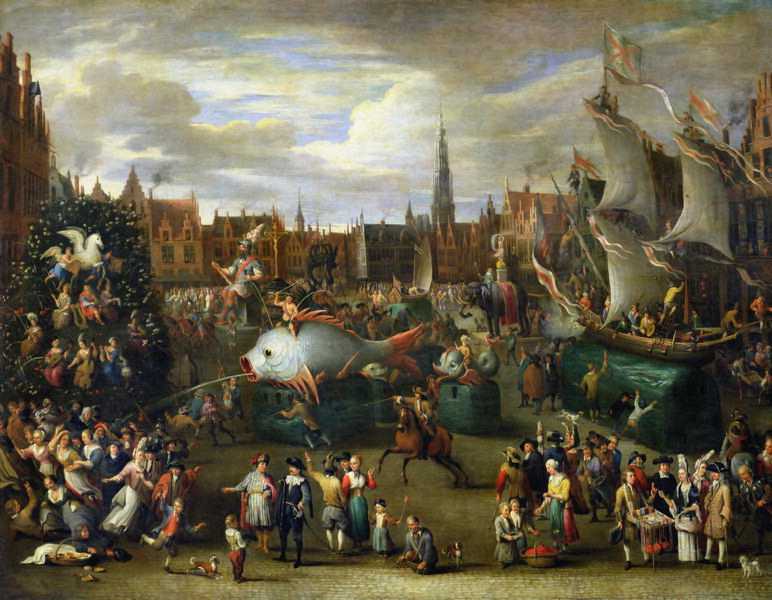
This exhibition dives deep into the art of celebration as it looked in the 1500s and 1600s — grotesque, joyful, tragic, and very, very loud. Through paintings, drawings, and prints by Cornelis de Vos, the Brueghel family, Rubens, David Teniers the Younger, and Jordaens, we encounter a world where festivals were a mix of carnival, chaos, and catharsis.
But it was not all merry-making. Scenes of plunder, siege, and war sometimes crept into these depictions, as if to remind the viewer: joy must often live next to terror. Royal banquets and courtly pageants, rich in symbolism and hierarchy, contrast with the earthier rhythms of village life.
Ultimately, these public festivals offered a sense of unity in a society battered by plague, hunger, and the 80 Years’ War. This is an exhibition about community under strain, and the enduring power of collective joy.
Definitely a must-visit, or at least, a reason to get the exhibition catalog.
Explore the exhibition catalog
Sage comme une image? Childhood through the Eyes of the Artist (1790–1850)
Musée de Tessé, Le Mans & Musée des Beaux-Arts, Bordeaux — Until November 3, 2025
Tenderness, mischief, solemnity. Through portraits, genre scenes, and early photography, this exhibition explores the evolving roles and representations of children in French society from 1790 to 1850, a period of intense political upheaval and artistic transformation.
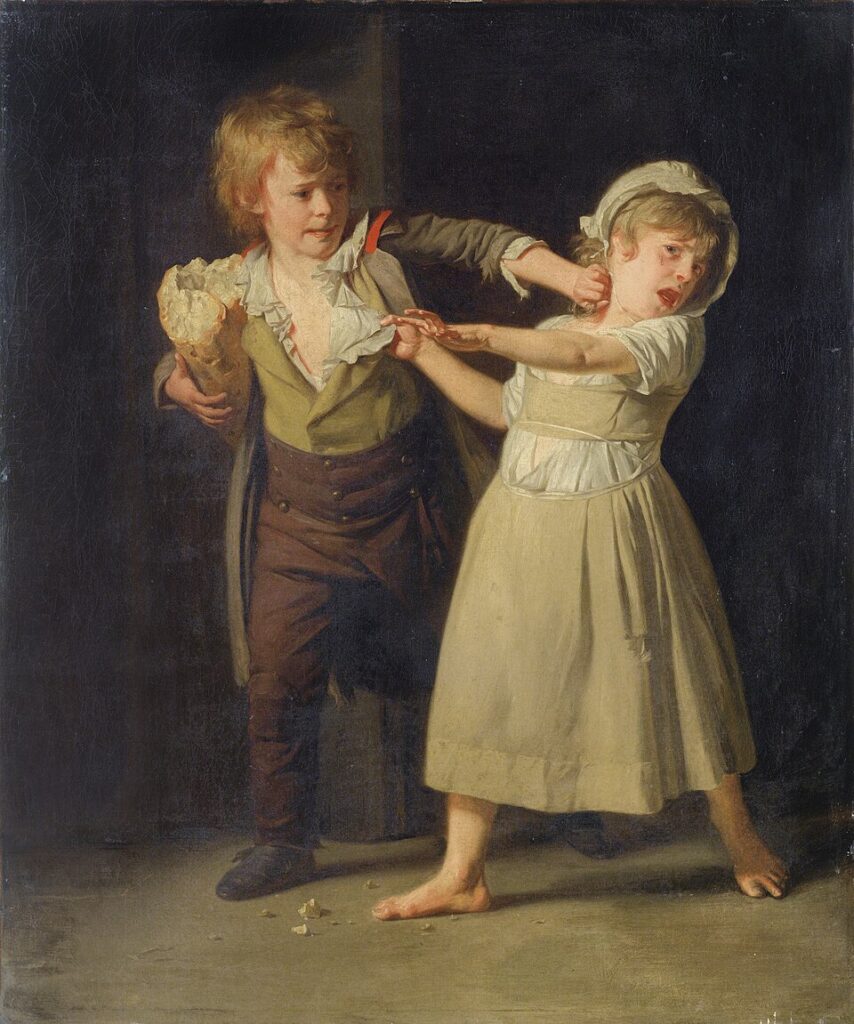
Structured thematically and chronologically, the show traces the shift from Enlightenment ideals of innocence to the grim realities of child labor, orphanhood, and militarization. It challenges us to ask: how did 19th-century artists reflect or distort childhood? And how do those images speak to us today?
Featuring both academic and vernacular art forms, the exhibition pairs celebrated names like Eugène Delacroix, Théodore Géricault, Anne-Louis Girodet, Jean-Auguste-Dominique Ingres, Camille Corot, Pierre-Jean David d’Angers, James Pradier, and Honoré Daumier with lesser-known artists, including Jeanne-Elizabeth Chaudet, Sophie Feytaud-Tavel, and Auguste de Châtillon.
Rarely exhibited or newly rediscovered works bring poignancy and complexity to this exploration of childhood in flux.
Explore the exhibition catalog
NORWAY
Lifeblood. Edvard Munch
⭐Our Favorite
Munch Museum, Oslo — June 27 to September 21, 2025
Edvard Munch lived in a world shaped by illness, both around him and within him. As the son, brother, and friend of doctors, he was no stranger to the clinical world. In his youth, he often accompanied his father, a physician, on medical visits and began sketching patients and apothecary interiors.
His lifetime spanned a medical revolution: from home births and deaths to the arrival of X-rays, antibiotics, and contraception. This exhibition juxtaposes Munch’s emotionally charged works with historical medical artifacts. One particularly moving item is a “sputum cup” once used by tuberculosis patients, including Munch’s own sister, whose death he memorialized in The Sick Child.
Also on view is Munch’s wrenching painting Inheritance, showing a child dying of congenital syphilis in the arms of its infected mother, presented alongside such artifacts as an infant incubator, anatomical models, and early contraceptives.
Perhaps the most haunting object is the incredibly realistic death mask of Munch, created by his personal doctor shortly after the artist’s passing — a stark, silent echo of a life consumed by observation, reflection, and pain.
The show brings together 150 of Munch’s works and 150 objects from medical history. It is a sweeping investigation into the intersection of art and medicine, body, and soul.
Exhibition catalog expected by the end of July 2025
The Czech Republic
Women Artists. 1300–1900
National Gallery Prague — Until November 2, 2025
Lavinia Fontana, Artemisia Gentileschi, Sofonisba Anguissola, Angelica Kauffman — names that echo through art history, but this exhibition casts its net far wider. From anonymous medieval nuns to late 19th-century visionaries, Women Artists. 1300–1900 is an extraordinary panorama of ambition, bravery, and creative defiance across six centuries of European art.
Focusing on Central Europe, the Netherlands, and Italy, the show tells stories both triumphant and tragic. There is Artemisia, who poured the trauma of her assault into powerful biblical heroines. Elisabetta Sirani, a prodigious Bolognese painter who died mysteriously at 27 after completing over 200 works. And Maria Sibylla Merian, the pioneering naturalist who ventured alone to Suriname in 1699 to study insects firsthand, decades before such a thing was thinkable for a woman. Her botanical illustrations would influence Carl Linnaeus himself.
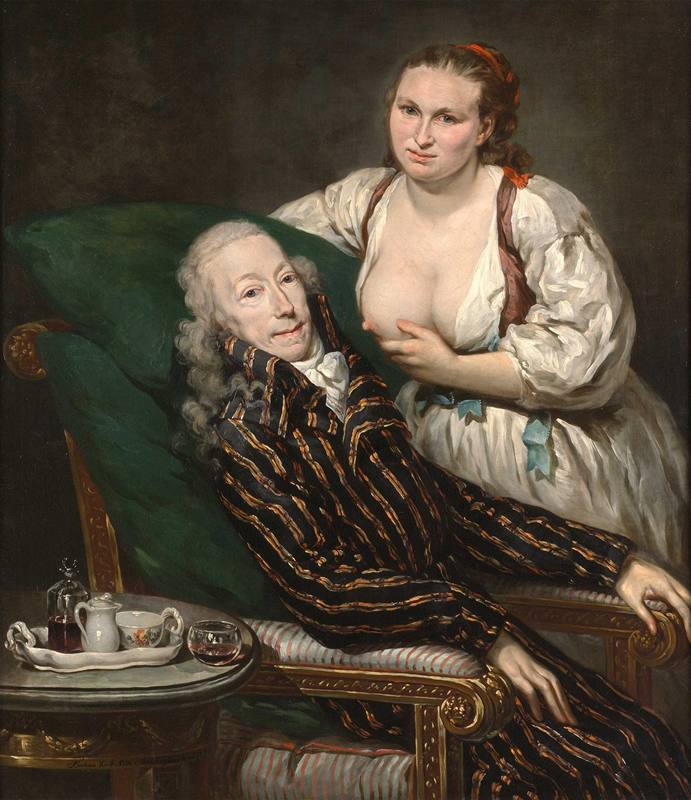
Equally compelling are lesser-known artists and surprising works: anonymous medieval women whose devotional images still radiate quiet intensity, and Barbara Krafft Steiner’s slightly unsettling Caritas Romana, where a dying count prepares to drink milk from his wife’s breast in a desperate bid for recovery (good luck posting that on Facebook).
The exhibition includes roughly 150 works: paintings, drawings, sculptures, and decorative objects. It even features an 18th-century portrait of a Catholic priest, painted by a woman artist — an extraordinary commission in a time when such arrangements defied social norms.
Women Artists reminds us that women have always been part of art history. They were just too often written out of it.
Exhibition catalog expected August 2025
HUNGARY
Master MS and His Age
Museum of Fine Arts, Budapest — Until July 20, 2025
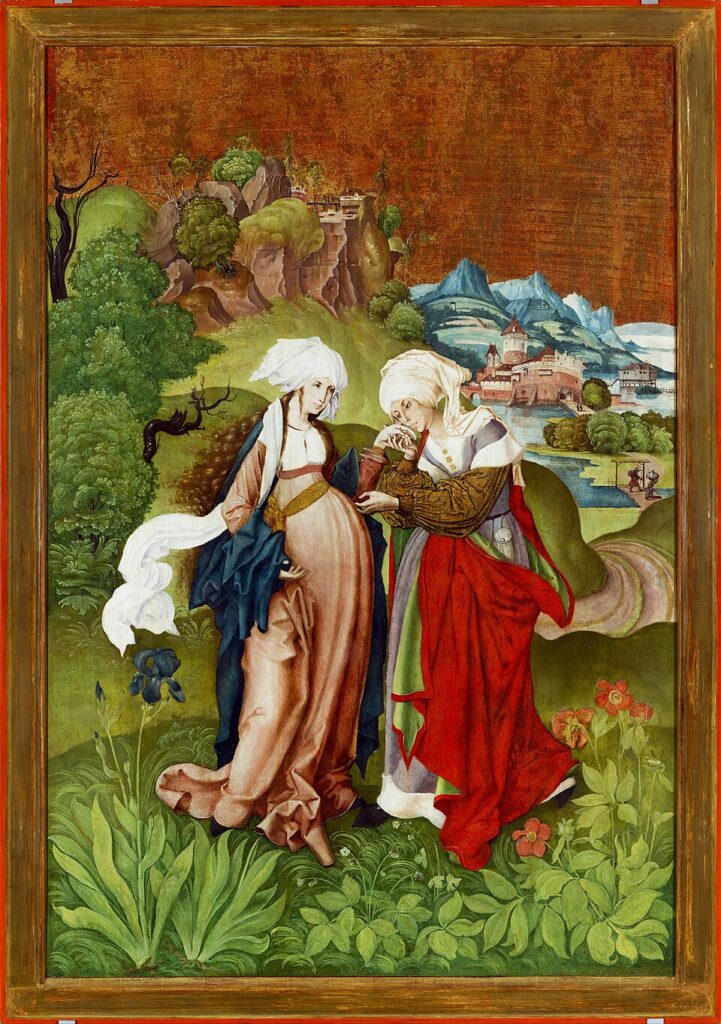
There is something irresistible about the mystery of monogrammists — those elusive artists identified only by initials or symbols. Art history knows dozens of them, and scholars play a kind of stylistic detective game: piecing together brushwork, color schemes, iconography, and regional quirks to uncover the truth.
Among the most enigmatic is Master MS. His monogram and the year of execution were discovered during an early 20th-century restoration on a panel from the former high altarpiece of Saint Catherine’s Church in Selmecbánya (now Banská Štiavnica, Slovakia). Fearing a Turkish invasion, the altarpiece was dismantled and evacuated, only seven panels survive today. For the first time, they have been reunited in this landmark exhibition.
In total, visitors can view around one hundred artworks, maps, models, jewels, and period documents. The exhibition not only showcases well-known and newly attributed works by Master MS but also explores the artistic regions that influenced him and the historical context of Hungary at the turn of the 15th and 16th centuries.
In a tantalizing twist, the curators put forth a new theory about one of Hungarian art’s enduring enigmas: who the elusive Master MS might have truly been.
It is a rich, revelatory experience that opens a new chapter in the study of Hungarian Gothic painting.
Explore the exhibition catalog
JAPAN
Renaissance to Baroque: Master Drawings from the Nationalmuseum, Stockholm
The National Museum of Western Art, Tokyo — July 1 to September 28, 2025
If you happen to find yourself in Tokyo this summer, a slice of Swedish cultural heritage is waiting for you in the heart of Japan.
The Nationalmuseum in Stockholm is renowned for its extraordinary drawings collection — over half a million works in total. This rare exhibition brings around 80 of them to Tokyo, offering a remarkable journey through European draftsmanship from the Renaissance to the Baroque.
Albrecht Dürer, Rembrandt, Filippo Lippi, Carpaccio, Pontormo, Guido Reni, Rubens — the list of artists reads like a who’s who of genius. And for those of us obsessed with drawing as an art form, this show is pure joy.
Ever noticed that drawings and prints are always shown in low light? Because paper is so sensitive to light, temperature, and humidity, these treasures are only displayed under strict conditions, and only for limited periods. So, when a major collection like Stockholm’s travels across continents, it is an occasion worth celebrating.
Picture this: a softly lit gallery, hushed atmosphere, and Dürer’s luminous Portrait of a Young Woman glowing under warm light. Yes, we will be staring. Hard.
The United Kingdom
Nicolas Party: Copper & Dust
The Holburne Museum, Bath — Until August 31, 2025
Imagine if Morandi met Magritte in a candy store? Welcome to the universe of Nicolas Party.
Nicolas Party’s art is what happens when classical draftsmanship collides with a psychedelic dream. His pastel-slicked portraits, candy-colored landscapes, and surreal still lifes turn the quiet traditions of figurative painting into something bold, strange, and irresistibly contemporary. Party does not just paint — he conjures. Faces dissolve into masks, trees become sentinels, rooms hum with impossible color. His work is part stage set, part hallucination, part homage to artists like Arcimboldo, Morandi, and Magritte, but always unmistakably his own.
He is also a favorite of auction houses, with works that sell like hotcakes. This exhibition features his most recent creations — landscapes, portraits, and still lifes painted in oil on copper. And if that was not enough, Party has also created a monumental site-specific mural at the Holburne, inspired by Benjamin Gerritsz Cuyp’s A Brawl between Peasants from the museum’s own collection.
There is always a particular kind of energy at Party’s shows, radiant, offbeat, and deeply joyful. One could almost say: come for the color, stay for the dopamine.
Kiefer / Van Gogh
Royal Academy of Arts, London — June 28 to October 26, 2025
Exhibition developed in close collaboration with the Van Gogh Museum, Amsterdam
Only Van Gogh could make a wheat field tremble with emotion. Only Kiefer could turn that field to ash and resurrection. This exhibition brings them together, not physically, but spiritually, in a breathtaking exploration of influence, trauma, and transcendence.
Anselm Kiefer has long looked to Van Gogh as a kind of creative ancestor, not simply for the impassioned brushwork or blazing yellows, but for the belief that art can wrestle with history and still reach toward the divine. Where Van Gogh’s landscapes shimmer with hope, Kiefer’s are scorched with memory, weight, and myth.
The exhibition features paintings, sculptures, and works on paper that form a rich dialogue across centuries. Sunflowers appear again — but here, among charred books and lead towers. Ruins become altars. The palette shifts from gold to gray, and back again.
One special highlight: Kiefer’s Walther von der Vogelweide: Under the Lime Tree on the Heather (2014), a monumental work that has never been exhibited publicly before, on loan from the artist and White Cube gallery.
Kiefer / Van Gogh is not a conventional pairing. It is a confrontation, and a communion, between two artists who understood suffering not as the end of the story, but as the soil from which beauty might still grow.
Exhibition catalog expected September 2025
The United States
J.M.W. Turner: Romance and Reality
Yale Center for British Art — Until July 27, 2025
They say Turner’s last words on his deathbed were: “The sun is God.” And you can feel that belief blazing through his canvases — radiant light, unbound skies, sunrises dissolving into storms and sea spray.
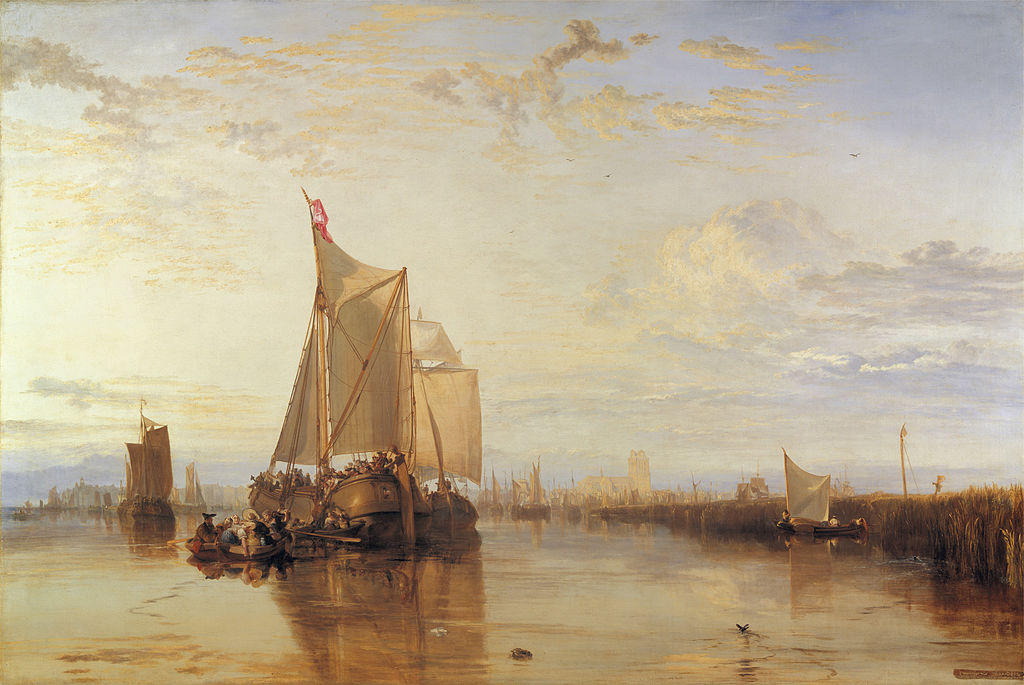
To mark the 250th anniversary of J.M.W. Turner’s birth, the Yale Center for British Art is mounting its first major Turner exhibition in over thirty years. On view are monumental paintings, atmospheric watercolors, and intricately etched prints, all drawn from the museum’s world-class holdings.
A special gem of the show? Turner’s final known pocket sketchbook, a tiny object packed with luminous studies and fleeting impressions.
This summer, if you are seeking relief from the heat, step into Turner’s cool, blazing light, it might just refresh your soul.
Gustave Caillebotte: Painting His World
Art Institute of Chicago — June 29 to October 5, 2025
No one painted men and the worlds they inhabit quite like Gustave Caillebotte. Even when a lady appears on the canvas, somehow your eye still drifts back to the man. He commands the space. He is the space.
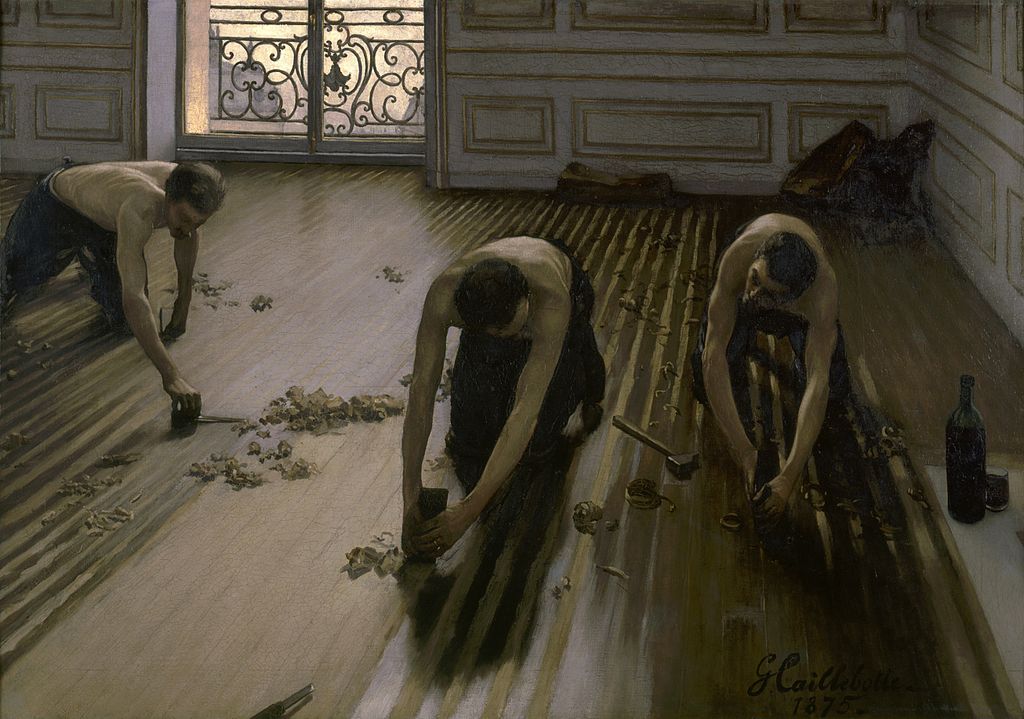
Take The Floor Scrapers (1875), for instance. When first submitted to the Salon, it was deemed too vulgar for public display. And why? Because it showed shirtless laborers, hard at work, scraping a Parisian floor. Imagine that — working men, sweaty and bent to their task, their limbs echoing the elegant lines of the wood grain. The scandal!
But the true star of the painting? The floor itself. Gleaming, tactile, almost glowing, it draws the eye with its sheer physicality. You want to reach out and touch it. You can practically smell the varnish.
This Chicago exhibition marks the final stop in a blockbuster tour that began at the Musée d’Orsay in fall 2024 and continued at the Getty, which recently acquired Caillebotte’s Young Man at His Window. Featuring around 120 works, the exhibition includes some of the artist’s most iconic portraits, as well as pastels, sketches, photographs, and personal documents.
Welcome to a world where men take center stage and polish the parquet with quiet grace.
Guests of Honor: Armor as Fashion
Detroit Institute of Arts — April 25, 2025 to April 26, 2026
This special exhibition reunites, for the first time in over two centuries, a dazzling pair: the gold-laced ceremonial armor once worn by Jean de Croÿ, and the very portrait in which he wears it. It is the ultimate aristocratic fashion statement.
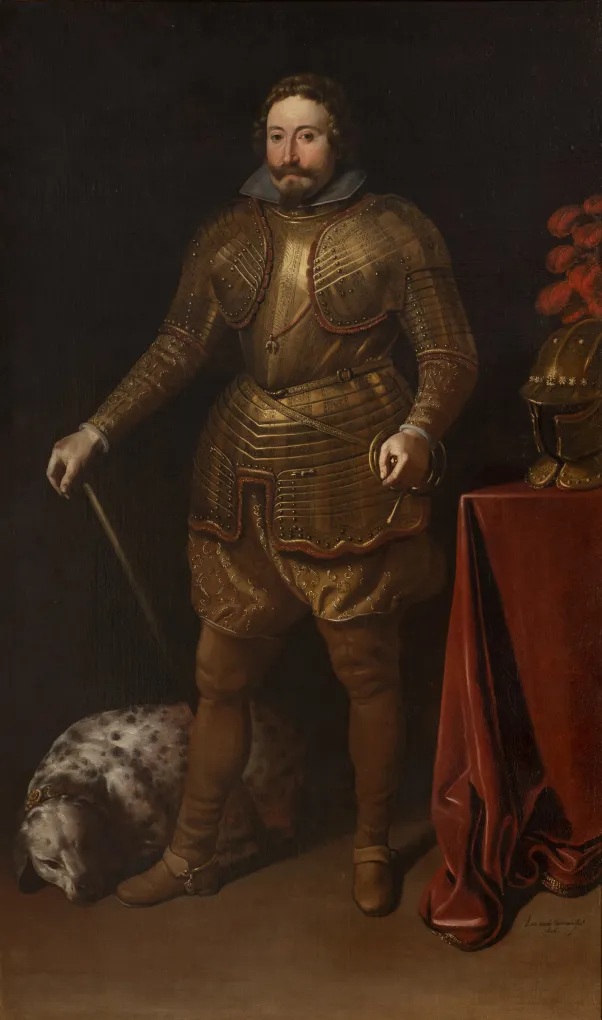
Jean de Croÿ, a nobleman of the Franco-Burgundian house, was a high-ranking courtier and one of the founding knights of the prestigious Order of the Golden Fleece. He served in elite Flemish guard units that protected the Spanish king. His portrait, borrowed from a private collection, shows him resplendent in parade armor crafted around 1624 by a Brussels gunsmith known only by the monogram MP.
The armor itself, brought to Detroit from the Musée des Beaux-Arts de Valenciennes, gleams with gold leaf and intricate decoration. This was more than protection, it was status, symbolism, and spectacle. In a poetic twist, the portrait and armor are together again, letting visitors compare artistic imagination with historical reality.
And for the younger knights-in-training: the DIA’s permanent collection includes ceremonial armor made for none other than Cosimo II de’ Medici when he was just 11 years old.
In short: bring the kids. Time travel starts at the gallery doors.
So, what do men think behind windows? What don’t women paint, given the chance? And what are the children trying to tell us from inside their gilded frames?
July 2025 is not just hot. It is luminous. These exhibitions will not cool the air, but they might just light up the mind.
Do not forget to grab a catalog or two. After all, some windows stay open only for a season.
Header image credits:
This collage was created by the author using details from the following artworks:
Young Girl Reading with a Dog by Jeanne-Élisabeth Chaudet
Young Man at His Window by Gustave Caillebotte
Telegram by Luise Max-Ehrler
Portrait of Napoleon I by Andrea Appiani
All original works are in the public domain. The collage composition © 2025 exhibitioncatalogs.com. All rights reserved.
Exhibition calendar
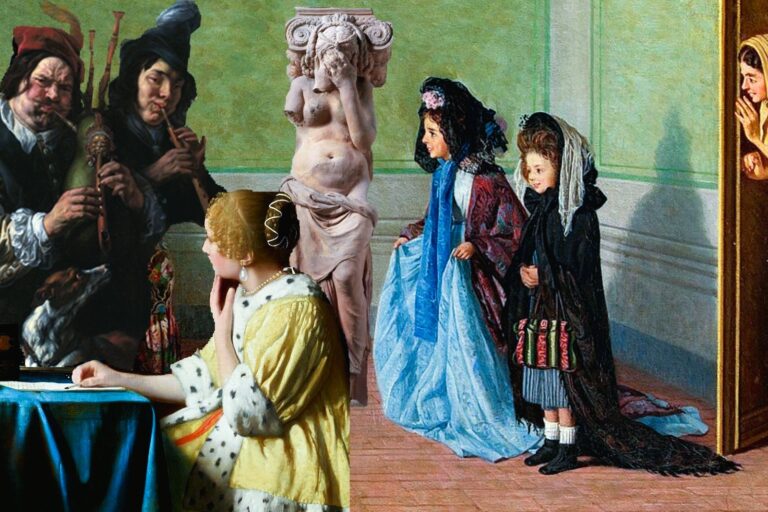
21 Aug 2025
Letters, Games, and Saint Fools: The Art Exhibitions of August 2025
August is usually a sleepy month in the art world. Museums are busy plotting…
Art news
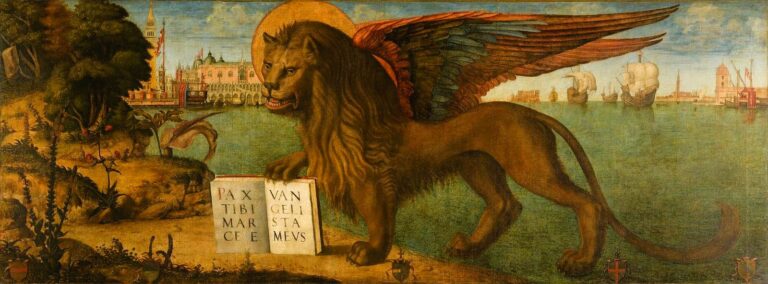
28 Aug 2025
Vittore Carpaccio’s Lion of Saint Mark: Venice’s Symbol in the Doge’s Palace
In Venice, the Doge’s Palace stood as the stage of a thousand-year republic. Its…















